Are you familiar with axolotls? They are amusing aquatic creatures that resemble salamanders. Due to the fact that they are currently very well-liked by exotic pet collectors, opportunistic individuals are swooping into the axolotl market and have begun mass breeding these endearing little creatures.
Perhaps you are a person who is curious about the specifics of axolotls and is considering possibly entering the world of petting and breeding them. Axolotls are relatively easy to breed, but in order to produce healthy, long-lived offspring, you must satisfy their nutritional needs.
Are you unsure of what, how, and when to feed these goofy amphibians? Stay tuned, as in this article I will provide you with a complete guide to feeding axolotls, along with other important things you need to note down. So let’s get into it!
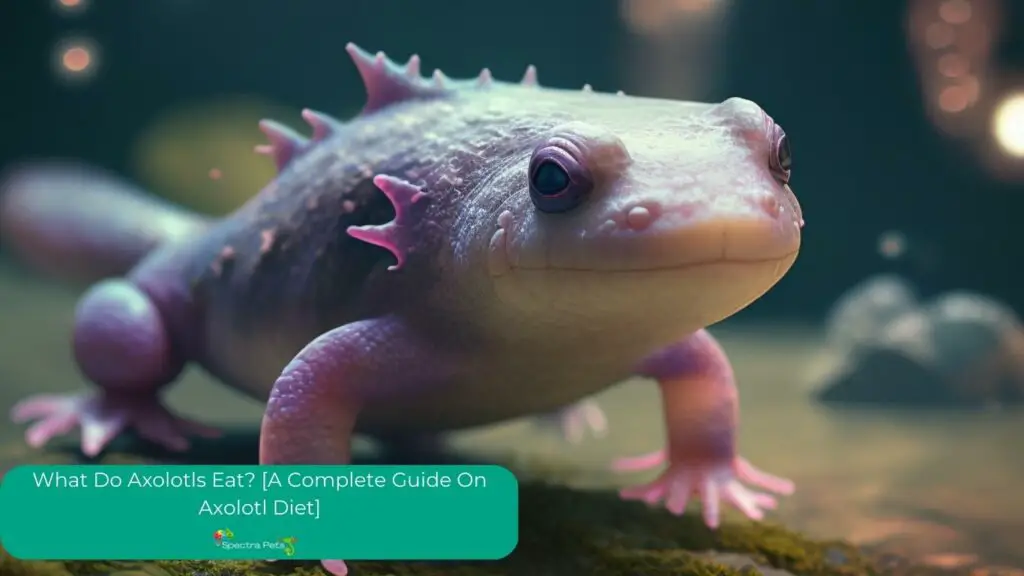
What do Real life Axolotls eat? What can I feed my Axolotl?
Axolotls are carnivorous creatures, meaning they’ll have a go at anything that will fit their mouth. However, this limits what they can eat, as their mouth is quite small, and therefore not a lot of things are going to fit it.
Now, let’s have a look at some live and frozen foods that you should be feeding your axolotls on a regular basis, along with some advantages and disadvantages each one comes with:
Blackworms
Blackworms make an excellent selection for your baby axolotl’s regular diet and do an equally good job at feeding adult ones as well. However, they also create a lot of waste in the aquarium, which results in a lot of bacteria being bred in it. After feeding, any leftover blackworms need to be removed right away to prevent a messy tank.

Advantages
- Inexpensive and easily accessible
- Highly nutritious
- Excellent for baby axolotls
Disadvantages
- Quite messy
Bloodworms
Bloodworms are not as good in terms of the nutritional value as other available worms. Despite this, they are very popular among axolotl owners due to a few advantages. They can be kept frozen, which is very important for avoiding a mess in the tank. They can also be fed as live food. However, any remaining live bloodworms will continue excreting waste and creating fungus in the tank.
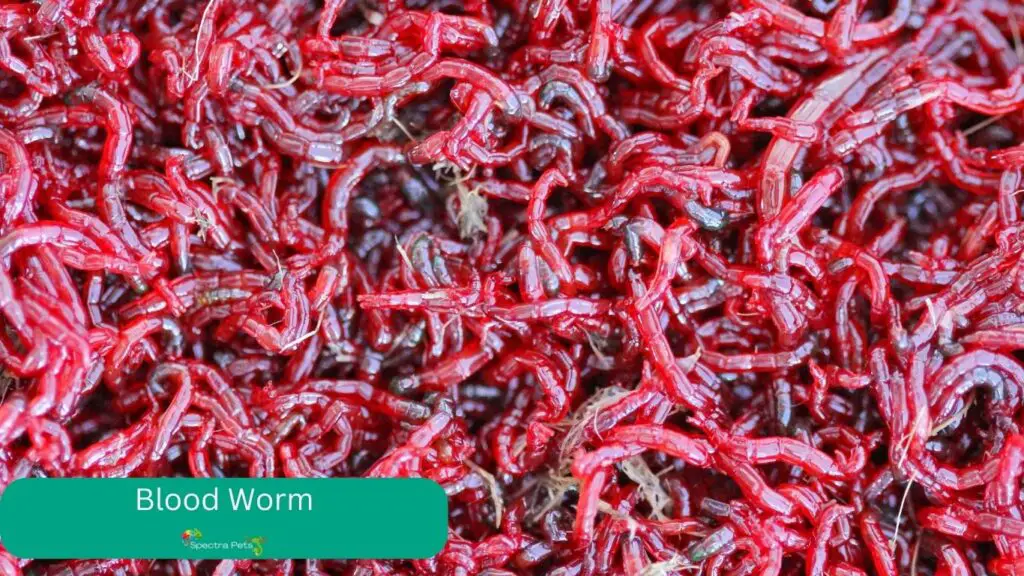
The best way to feed bloodworms is to place them in a jar and then put it in water, so that they don’t begin to spread.
Advantages
- Can be live as well as frozen
- Cheap and highly accessible
Disadvantages
- Makes the water smelly
- Catches fungus relatively fast
Daphnia
Live Daphnia is highly coveted by juvenile axolotls. They are extremely rich in lipids, fatty acids, and other important vitamins that are really beneficial to the growth of axolotls in their juvenile period.
Adult Axolotls enjoy dining on daphnia just as much as baby ones. However, the nutritional value of daphnia is not enough to satisfy the appetite of adult axolotls, and they’ll always be wanting more.
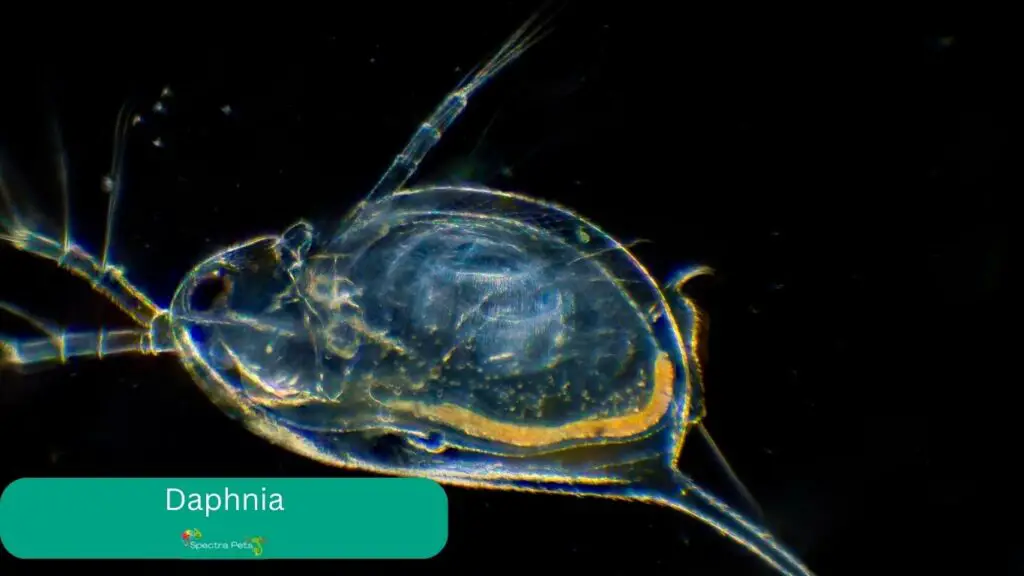
Additionally, live daphnias have the risk of carrying diseases and parasites that can be fatal to your axolotls. You can avoid this risk by getting them from reliable and reputable sources.
Advantages
- Can be bred domestically
- Very nutritious and perfect for juvenile axolotls
- Inexpensive and doesn’t produce as much waste as worms
Disadvantages
- Not good enough to fulfill the appetite of adult axolotls
- Can potentially carry parasites and fatal diseases
Read More: Is it safe to feed worms from outside?
Nightcrawlers
Unquestionably, the most wholesome and common food for axolotls is nightcrawlers. Furthermore, they are readily available everywhere. The Red Wiggler, the Canadian Nightcrawler, and the European Nightcrawler are the most typical nightcrawlers for axolotls.
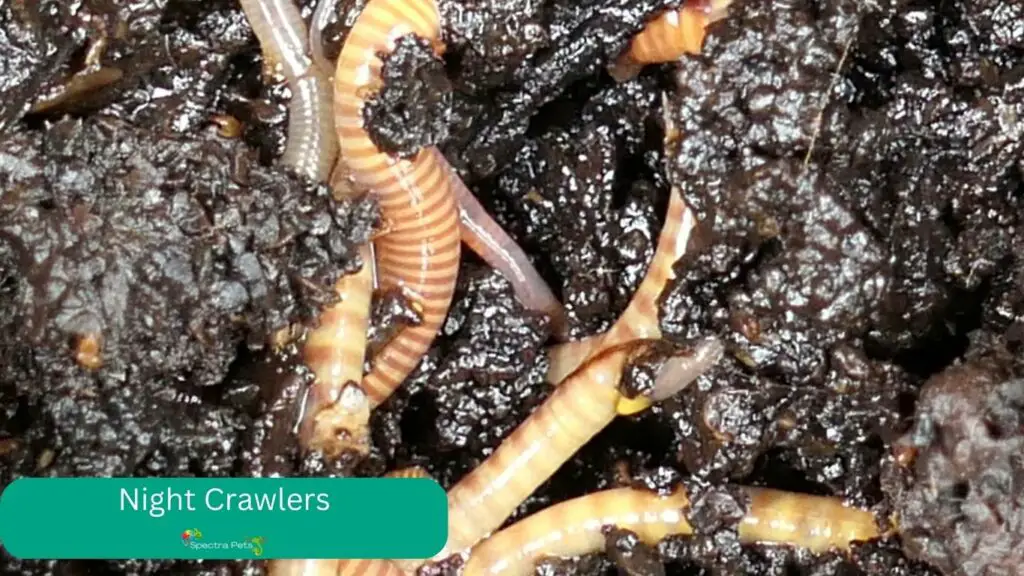
Advantages
- Highly nutritious and excellent for mature axolotls
- Inexpensive and easily available
Disadvantages
- Not really befitting the diet of baby axolotls
- Red Wiggler Nightcrawlers excrete foul substances that make the tank dirty easily
Brine Shrimp
Brine shrimp are another great source of protein, fat, vitamins, and lipids for your axolotls. Brine shrimp can be fed live, as well as frozen, to your axolotls. This, as well as the fact that they can be home-grown, makes them an excellent choice.
Keep in mind that these crustaceans can also potentially carry infections, so make sure to get them from a reliable source as well.
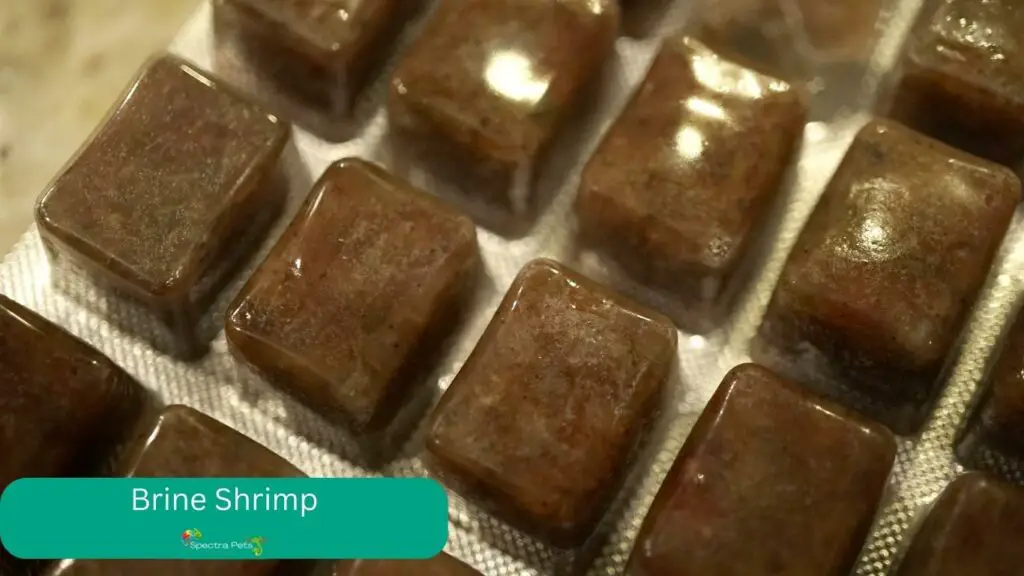
Advantages
- Cheap and high in nutrition
- Great availability
- Easy to breed at home
- Can be fed as live food and frozen
Disadvantages
- Can die really fast, potentially leaving diseases behind
- Produces a lot waste
- Since they have salt content, they can alter the water hardness
Ghost Shrimp
Not only are ghost shrimp highly nutritious, but they also do an excellent job of maintaining the ecosystem of your tank. They always eat up any leftover food in the aquarium.
They are also great to feed your axolotls, both adults, and babies. They have a very soft outer shell, which poses no threat to your exotic pets.
But, they are not as cheap as other options, hence they are quite unpopular among axolotl owners.
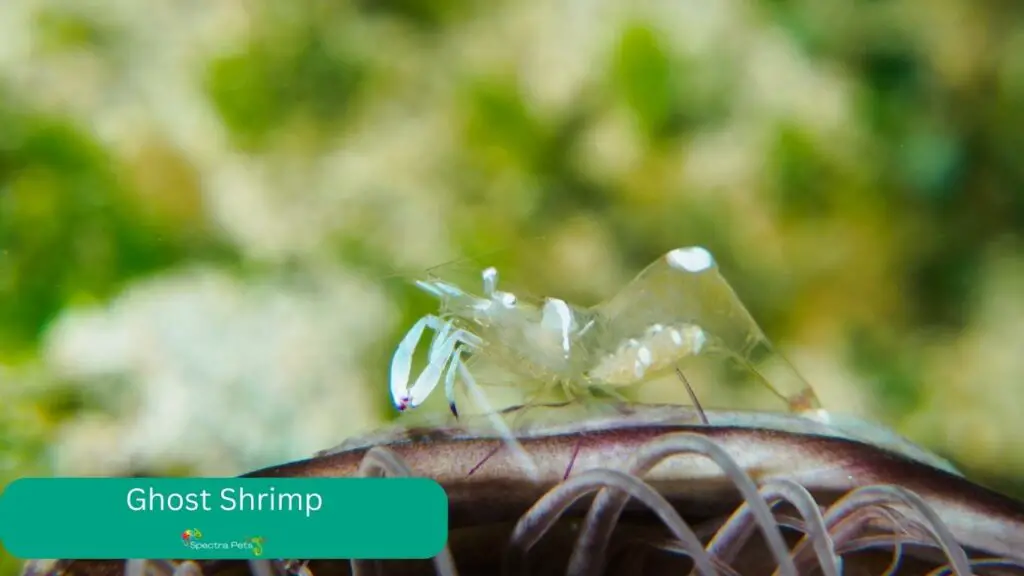
Advantages
- Can be easily cultured
- Helps keep the tank clean
- Available at most pet stores
Disadvantages
- Pretty expensive
- Not a proper meal by themselves
- Not easy to culture in freshwater
Frozen Heart of Beef
Frozen Beefheart, although a great source of protein, should not be fed too often to axolotls because of its high-fat content. You can cut the heart into cubes small enough to fit the axolotl’s mouth and feed this once a week as a treat.
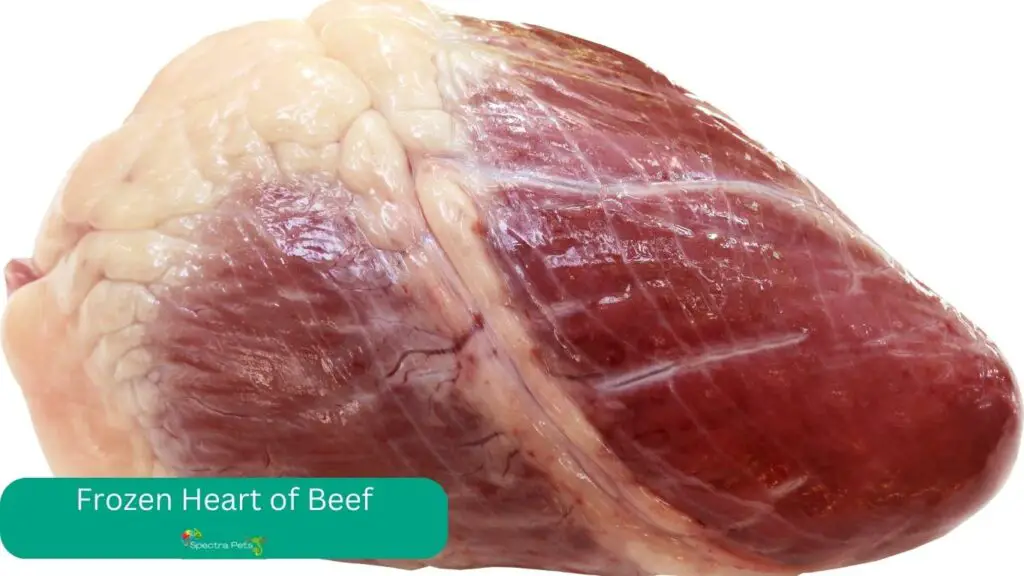
Advantages
- Great source of protein
- Can be frozen
Disadvantages
- Contains a high amount of fat
Commercial Food
Pellets are the best choice found in any local pet shop by a mile. There are many different types of pellets available in two categories: sinking pellets and smaller pellets.
You do need to keep in mind that commercial pellets are not 100% natural. They may have many inorganic substances that are not good for your pet’s health.

I would advise you to inform yourself well about the contents of the pellets before purchasing them. I would recommend any pellets that at least have a protein content of 40% and also have a low-fat content. Sinking pellets are an excellent choice since axolotls tend to stay on the bottom surface, where the food will reach them quite easily.
Advantages
- Cheap
- Can be found everywhere
Disadvantages
- Can turn your tank quite messy
- Not 100% organic
Here, I have put together a list of what I think are the best commercial foods for axolotls:
- Invert Aquatics Soft Pellet
- A Lotl Axolotl Food
- Salmon Pellets
These are some of the best commercial pellets designed for amphibians that are available on the market and do not contain any harmful substances.
Related Articles:
What should I not feed my axolotl?
An axolotl’s diet is diverse, but not everything is good enough to feed your axolotls. Here, I’ll talk about some foods that you should not be feeding your axies:
Processed Meat:
Axolotls should absolutely not be fed any kind of processed meat. Processed meat generally has many different concentrations of chemicals that may have a negative impact on your pet’s health.
Animals with hard and crusty exoskeletons:
Axolotls don’t have sharp teeth that can bite through hard shells. Their teeth may get seriously injured while trying to bite animals with a hard outer shell.
Feeder Fish:
Feeder fish carry many parasites and infections, so they need to be quarantined for at least 14 days to be considered safe. Why go through so much hassle when there are plenty of other options available?
Read More: Will axolotls eat their eggs and babies?
What Is The Easiest Way To Feed An Axolotl?
It is okay to feed your pet axolotls with your hands. Just hold the food in between your fingers and tuck it into the water. Your pet amphibian will swim up as soon as it notices, and take the food away from your fingers. It is a really fun way of interacting with your exotic pet.
Will Axolotls stop eating when full? Can I overfeed Axolotls?
Well, most of the time, axolotls will stop eating when they feel that they are full. In some rare cases, the Ambystoma will keep eating if food is readily available.
Overfeeding an axolotl is an easy mistake many newbies make. It is not recommended to overfeed an axolotl or any amphibian.
This is quite injurious to their health, and it’s easy to do so. Adult axolotls require feeding only three days a week in order to maintain their health. Feeding them more frequently will result in them fattening up and becoming unhealthy.
Overfeeding will also introduce digestive issues, and axolotls will start to reject food. If you’re feeding them live food, this will result in a dirty and messy tank, as bacteria will start to breed.
When and how often should I feed my Axolotl? How much food do Axolotls need?
Juvenile axolotls require food on a daily basis in order to grow properly, while adult ones only need a moderate amount of food. Feeding adult axolotls twice or three times a week is sufficient.
You should be feeding your axolotls during nighttime because of their nocturnal habit and behavior.
Ideally, they should only receive food that they can finish in 1 to 3 minutes at every serving. By doing this, you can usually be assured that you are feeding them just enough and not overtaxing their digestive systems.
This is an average deduction; individual axolotls will differ from one another. Once again, everything is based on the individual’s size and maturity. For instance, an axolotl that is small or immature may initially only require 1–2 minutes to be full.
The majority of adult axolotls can finish one whole worm in about 3 minutes, whereas younger ones will consume much less food during this period. Therefore, you must ascertain how much your pet can consume in this short period if you want to customize their diet. Furthermore, axolotls should neither be underfed nor overfed. They must be fed adequately, so you must check on them.
If you have multiple axolotls, you need to make sure they are all getting the right amount of food. It takes a lot of effort to feed multiple axolotls, but you must keep an eye on their eating patterns. Initially, you will need to undergo some trial and error, but soon you’ll just catch the correct pattern!
How do Axolotls eat? Do Axolotls swallow the food whole?
Axolotls have a primitive biology; they clamp down on their prey using their flimsy teeth. These animals are unable to chew or tear their food because their teeth lack sharpness. And because of this, they swallow the food whole, and the food they eat needs to be the same size as or smaller than the size of their mouth. Axolotls ingest food and water together in their mouths because they are unable to bite or chew.
What is the difference between a wild and a pet Axolotls diet?
The most likely location where you can find wild axolotls is Lake Xochimilco, which is located near Mexico City in Mexico. The murky waters of Lake Xochimilco are home to a multitude of small animals, which serve as excellent food for axolotls in the wild.
These animals are namely various insects, slugs, small crustaceans, mosquito larvae, crickets, worms, small fish, snails, and frog tadpoles.
A captive axolotl has a quite different diet than that of a wild one. There are many water-based foods, such as blackworms, bloodworms, nightcrawlers, daphnia, and brine shrimp, that you can feed your axolotls. You can also offer them frozen food, such as frozen hearts of beef.
Read More: Can you feed mealworms to your axolotl?
How long can Axolotls go without food?
A healthy axolotl will survive up to 3 weeks without any food. This doesn’t mean that you should plan a trip 3 weeks long without thinking about their food!
You must never purposefully stop providing your axolotls with food. Axolotls have innately carnivorous behavior, so if they get too hungry, they will soon start eating each other. Also, starvation is injurious to the health of any living being, and it’s quite inhumane to do so!
Frequently Asked Questions about Axolotl Diet
What should you feed axolotls in captivity?
What do axolotls eat in the wild?
What is the main food source for adult axolotls?
Can Axolotls eat fish food? Can I feed my Axolotls just pellets?
These types of pellets should be offered every other feeding. Because they are so high in protein, if you give your axolotls only these pellets on a regular basis, they will quickly outgrow their natural growth and put on weight. For more information, you can read my detailed article regarding “Can Axolotls eat fish food”.
What kind of fish can I feed Axolotl?
Will an Axolotl eat Guppies?
Can I feed my Axolotls raw fish or raw chicken?
Some fish, such as guppies and salmon, don’t usually carry harmful bacteria, so it may be okay to feed salmon or guppies to your pets.
Do Axolotls eat Goldfish?
Will an Axolotl eat a Betta Fish?
Can Axolotls eat Krill?
Can Axolotls eat Snails?
Can Axolotls eat Slugs?
Can Axolotls eat Brine Shrimp?
Do Axolotls eat each other?
Should I feed my Axolotl every day?
Do Axolotls eat at the night?
Do Axolotls choke on their food?
What can baby axolotls eat?
Can axolotls eat bloodworms?
Can axolotls eat cat food?
Can axolotls eat vegetables or plants?
Can axolotls eat live fish?
How can I ensure my axolotl gets a balanced diet?
Wrapping Up
Feeding any new pet can be staggering, especially if you don’t know much about their diet. But feeding axolotls is really a walk in the park. As long as you provide them with enough protein, you shouldn’t be too worried about this at all. Just remember to feed the juveniles daily and the adults every other day.
A balanced diet will keep your axolotl healthy and maximize its lifespan, so a little effort from you will only contribute towards your pet’s happiness.
